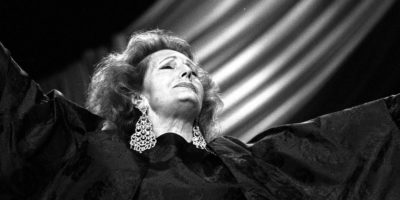10 Most Notorious New York Gangsters
Looking at the picturesque streets of New York, and towering skyscrapers painting the city’s skyline, an unsuspecting traveler oblivious to the city’s history will hardly believe that it was once a solid haven of the Mafia criminal underworld activities. In the early and mid-20th centuries, the rise of organized crime intensified in major cities in the U.S., including Chicago, Philadelphia, Detroit, and of course, New York. Notorious gangsters were birthed into the system, controlling the mass trafficking of drugs and other criminal activities across borders.
Gotti is perhaps one of the best-known, but others like Charles ‘Lucky’ Luciano and Vito Genovese go down in history as some of the most powerful gangsters based in New York at the time. Some of these were ruthless in their operations, often resorting to violence to maintain control. While crime levels have reduced in the city, and a majority of the famous names and operations taken down by law enforcement authorities, the marks left by some of the city’s most notorious gangsters can hardly be forgotten. Here’s a list of ten of them.
1. John Gotti

John Gotti being booked by the FBI New York offices on December 11, 1990. Photo by FBI New York. Wikimedia Commons.
John Gotti is regarded as one of the most dangerous, and powerful Italian-American gangsters in United States history. He was also known as “The Teflon Don”, or the ‘Dapper Don’ for his ability to escape conviction and his flashy style respectively. His life in crime began at an early age in the Bronx where he was born, and he entered the underworld as a member of the Gambino crime family in the 1960s. Gotti rose through the ranks quickly, becoming a capo (captain) of his crew in the 1970s.
He came to be the boss of the Gambino crime family after successfully overseeing the murder of the then-family boss, Paul Castellano. Under his leadership, the Gambino family’s power and influence were cemented in the Mafia underworld. Even after being arrested and charged with various crimes throughout the 1980s and 1990s, including murder, racketeering, and tax evasion, he was acquitted in three separate trials.
In 1992, however, Gotti was finally convicted of 5 murders, conspiracy to commit murder, racketeering, obstruction of justice, illegal gambling, extortion, tax evasion, and other crimes. He was sentenced to life in prison without the possibility of parole and died in prison in 2002 from complications related to throat cancer. His life has been depicted in numerous films, including Boss of Bosses (2001) and Gotti (2018).
Read more on: 10 Things you Probably didn’t Know about Italian Gangster John Gotti.
2. Meyer Lansky

Lansky (1958) by Al Ravenna. Wikimedia Commons.
Lansky was a member of the Jewish mob and a longtime associate of Charles ‘Lucky’ Luciano. Also known as the ‘Mob’s Accountant’, he is considered to have born quite a considerable influence over the Italian-American mafia, contributing to the running of the criminal underworld in the U.S. Born on July 4, 1902, in modern-day Belarus, he moved to the U.S in 1911, and settled in New York. He would soon meet Benjamin ‘Bugsy’ Siegel’, and form a lifelong friendship. Siegel is associated with crime in Las Vegas and was a famous American mobster in the early 1930s. Lansky is considered one of the most successful gangsters, having run a gambling empire not only in New York but all over the country and outside the borders for 50 years. He died in 1983.
3. Paul Kelley
Founder of the Five Points Gang, Kelley was an Italian American mobster based in New York. He was a boxer too. His gang was one of the very first major street gangs, and its members such as Al Capone, Meyer Lansky, and Lucky Luciano would later rise as powerful crime bosses in the underworld. He had a significant rivalry with Monk Eastman, another notable New York gangster fighting for control over the city. The two often engaged in armed conflict between their gangs and at one point, Eastman challenged Kelley to a boxing fight.
Kelley’s political associations with Tammany Hall politician Tim Sullivan bore him an advantage as he received protection. This was later withdrawn as the politicians wanted to clean up the Bowery. Nonetheless, he is largely considered one of the most successful and influential gangsters in history, organizing crime on a business model. Author Jay Robert Nash refers to him as ‘ the first modern-day underworld boss.’
See more on 10 of the Most Famous Italian Gangsters.
4. Dutch Schultz

Mugshot of Dutch by NY Police Dept. Wikimedia Commons.
Although famously known as ‘Dutch’ Schultz, his real name was Arthur Flegenheimer. He was born in The Bronx, New York City on August 6, 1901, to German-Jewish parents. Schultz was thrown into a world of crime at a young age, committing burglary in clubs where he worked as a bouncer. At 18, he was caught and sent to prison on present-day Roosevelt Island. There, he proved to be hard to keep in control and was transferred to a working farm before being released on parole in 1920.
This was in the initial years of the Prohibition era, which saw the illegalization of alcoholic drinks in America. Demand created led to the illegal sale, termed bootlegging, and the establishment of speakeasies to facilitate the illegal trade in alcohol. Schultz soon became one of the most well-known figures in the bootlegging industry and the Harlem numbers rackets.
He was known for his ruthlessness and use of violence against rivals. In a rivalry with the Numbers Queen, Madame St. Clair, over 40 people were killed. He was later indicted for tax evasion in the early 1930s, but he successfully escaped conviction. Many speculate that he bribed jurors in the first trial, and manipulated the public by performing charitable works to appear a good citizen in the second trial. Both tactics worked. However, his resolve to kill Prosecutor Thomas Dewey led to his assassination by the Commission, who were opposed to his plan. He was shot on October 23, 1935, at a restaurant in New Jersey. He died the next day.
5. Arnold Rothstein

Rothstein (1919) by Staff Photographer, Chicago Daily. Wikimedia Commons.
Also known as ‘The Brain’, or ‘The Fixer’ Rothstein is one of the most notable New York mobsters of the early 20th century. He saw a great opportunity to make money during the Prohibition era by ‘giving people what they wanted’, and is often regarded as one of the pioneers of organized crime in the U.S. He is said to have been the first to illegally smuggle Scotch Whiskey into the country. He became one of the most successful and powerful bootleggers, building a massive criminal empire from his profits and connections.
Rothstein was also known as a fixer in horse races and is accused of having been involved in the 1919 World Series fix, in which he bet and won over $ 350,000. His notoriety is captured in several films, including The Great Gatsby, in which the character Meyer Wolfsheim is loosely based on his life. Rothstein was a mentor of some of the later crime bosses, including Bugsy Siegel, Meyer Lansky, and Lucky Luciano. He died from a gunshot wound in 1928, after failing to pay a debt from a fixed poker game.
6. Charles ‘Lucky’ Luciano

Lucky Luciano’s mugshot by NY Police Dept. Wikimedia Commons.
Born in Sicily, Italy on November 24, 1897, Luciano migrated to the U.S. in 1906 and settled with his family in New York City. He dropped out of school at 14 and was already a member of the Five Points Gang in his teenage years. When the Prohibition era began around 1920, he had begun working for his mentor, Arnold Rothstein in the bootlegging business. Luciano would proceed to rise through the ranks in the Italian-American mafia underworld. He played a critical role in the establishment of the National Crime Syndicate, which was an umbrella body of several criminal organizations in the U.S. This was after the May 1929 conference in Atlantic City with other figures including Bugsy Siegel, Al Capone, Dutch Schultz, Torrio and Frank Costello.
Hundreds of murders are associated with the syndicate, most of which were carried out by Murder.Inc, its enforcement organ. He is also regarded as the father of modern organized crime in America for the foundation of The Commission in 1931. This was the oversight body for the Italian-American mafia, whose objectives included the resolution of disputes and running of all mafia activities in the U.S. Luciano was convicted for operating a prostitution ring in 1936 and awarded 30 to 50 years in prison. He was however released when World War II broke out and deported to Italy, where he died in 1962.
Top 10 Facts about Italiano Gangster Lucky Luciano.
7. Vincent Louis Gigante
“The Chin”, as he was sometimes known, was an Italian-American mobster and boss of the Genovese crime family in New York City from 1981 to 2005. He was born in 1928 in Lower Manhattan and grew up in the Greenwich Village neighborhood. Before turning to crime, he was a professional boxer, fighting in several matches from 1944 to 1947. Starting out as an enforcer for the Luciano crime family, he rose quite steadily through the ranks, ultimately becoming the family boss in 1981. Gigante is also known for being the shooter in the failed murder plot of Frank Costello in 1957, which had been ordered by Vito Genovese. In 1986, he ordered the failed assassination of the then-Gambino crime family boss, John Gotti.
While the rest of the gangsters used violence, bribery, and blackmail to evade law enforcement, Gigante is remembered for using a rather fascinating technique. He feigned insanity to avoid suspicion, and would often be seen walking in a bathrobe in the streets, talking to himself. This earned him the nickname, of ‘The Oddfather’ and ‘The Enigma in the Bathrobe’. He did this for a record 30 years before he was successfully convicted in 1997 and 2003. He died in 2005, in the U.S Medical Center for Federal Prisoners.
10 Most Famous Mafia Gangsters of All Time.
8. Carlo Gambino

Circa 1935: Headshot of Italian gangster Carlo Gambino. (Photo by Hulton Archive/Getty Images) NYPD. Wikimedia Commons.
Carlo Gambino was born on August 24, 1902, in Palermo, Sicily, and moved to the United States in 1921. He is considered one of the most powerful members of the Italian-American mafia, and a dominant crime boss of the Gambino crime family.Gambino’s criminal career began with his membership in a criminal organization led by Joe Masseria, leader of the Genovese crime family, which was one of the Five Families of the New York City mafia. The other four were the Gambino, Lucchese, Colombo, and Bonanno.
Carlo Gambino rose through the ranks of the mafia in New York City during the 1930s and 1940s, and by the 1950s, he had become one of the most notable mafia bosses in the country. In 1959, following the incarceration of Vito Genovese, he assumed leadership of the Commission, a position he held until his death in 1976. He was known for his ability to keep a low profile, his strict business sense, and his organizational skills which saw him run the criminal organization like a legitimate enterprise.
Although he participated in major crimes such as extortion, racketeering, and loan-sharking in his 50 years in organized crime, he only served 22 months for tax evasion throughout his criminal career, successfully evading any serious criminal convictions.
9. Vito Genovese

Genovese by Phil Stanziola. Wkimedia Commons.
Vito Genovese was one of the most notorious Italian-American gangsters in the country and a key figure in the international narcotics trade. He was born on November 27, 1897, in Italy, but later to the United States with his family in 1913 and settled in Little Italy, Manhattan. During the Prohibition era, he started as an enforcer in the American mafia, and quickly rose through the ranks to become a powerful crime boss in the 1930s. Genovese had previously worked with Joe Masseria in the 1920s. He became friends with Lucky Luciano who was also an associate, and the two, in addition to Frank Costello began their bootlegging operation.
Amassing more wealth, and power and expanding his illegal activities, Genovese became known for his terrible temper and liking for violence to consolidate his power. In the late 1930s, he is alleged to have murdered Gaetano Reina, a leader of a gang from the Bronx, and consequently took over the gang. This was just the beginning of a series of murders of anyone who stood in his way.
His undoing took place when he planned to take up the title of ‘boss of the bosses in 1957. To achieve this, he and Carlo Gambino ordered the murder of Albert Anastacia, the Gambino family crime boss. The murder was successful, and Carlo took the reins. The other kill order was for Frank Costello, but it failed, attracting the attention of law enforcement. Genovese was indicted in 1979 for narcotics charges, and awarded 15 years in prison. He died in prison on February 14, 1969.
Check out the 10 Notorius Filipino Mafia.
10. Monk Eastman
Edward ‘Monk’ Eastman was a notorious American gangster based in New York City during the early 20th century. Born in 1875 in the Lower East Side of Manhattan, Eastman grew up in a relatively poor family, and his father had left by the time he was 5 years old. From an early age, he was involved in petty crime, and in 1898, he was arrested for larceny and jailed for 3 months. At the time, he was a member of the Allen Street Cadets, a gang of thieves. He then formed his gang, which came to be known as the Eastman Gang. Its operations ranged from theft, extortion, and theft. Known for his short temper and a liking for violence, he was often involved in many street fights. Being a skilled boxer only added to his zeal to engage in fights, and one of his main rivals was Paul Kelley, another boxer and criminal.
Gang rivalry with other gangs in the city, including Five Points Gang and Black Hand escalated the occasional violence, and several gang members were arrested. In 1904, Eastman was convicted of attempted and sentenced to 10 years in prison. Although he was released after serving for 5 years, he found his gang had split up, and no longer wanted him as their leader. He however continued his life of crime and was arrested severally after that. In 1917, he was shot in a confrontation with a rival gang member, and he never fully recovered until he died in 1920. He remains to be one of the most notorious gangsters who preceded the likes of Arnold Rothstein in the early 20th century.
Planning a trip to Paris ? Get ready !
These are Amazon’s best-selling travel products that you may need for coming to Paris.
Bookstore
- The best travel book : Rick Steves – Paris 2023 – Learn more here
- Fodor’s Paris 2024 – Learn more here
Travel Gear
- Venture Pal Lightweight Backpack – Learn more here
- Samsonite Winfield 2 28″ Luggage – Learn more here
- Swig Savvy’s Stainless Steel Insulated Water Bottle – Learn more here
Check Amazon’s best-seller list for the most popular travel accessories. We sometimes read this list just to find out what new travel products people are buying.









